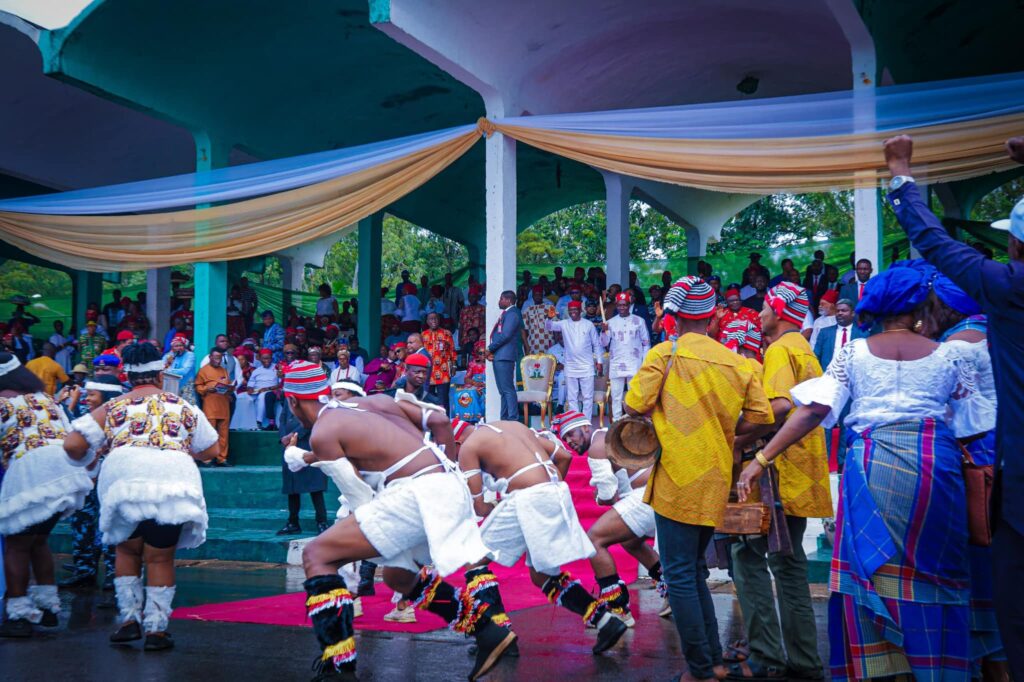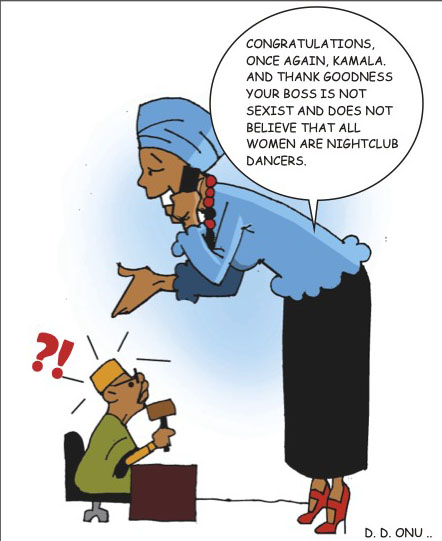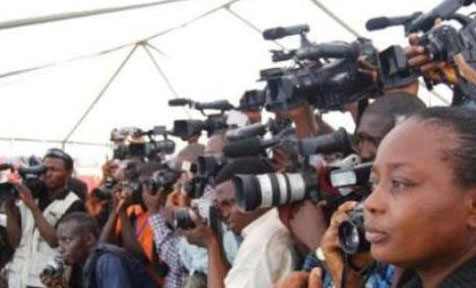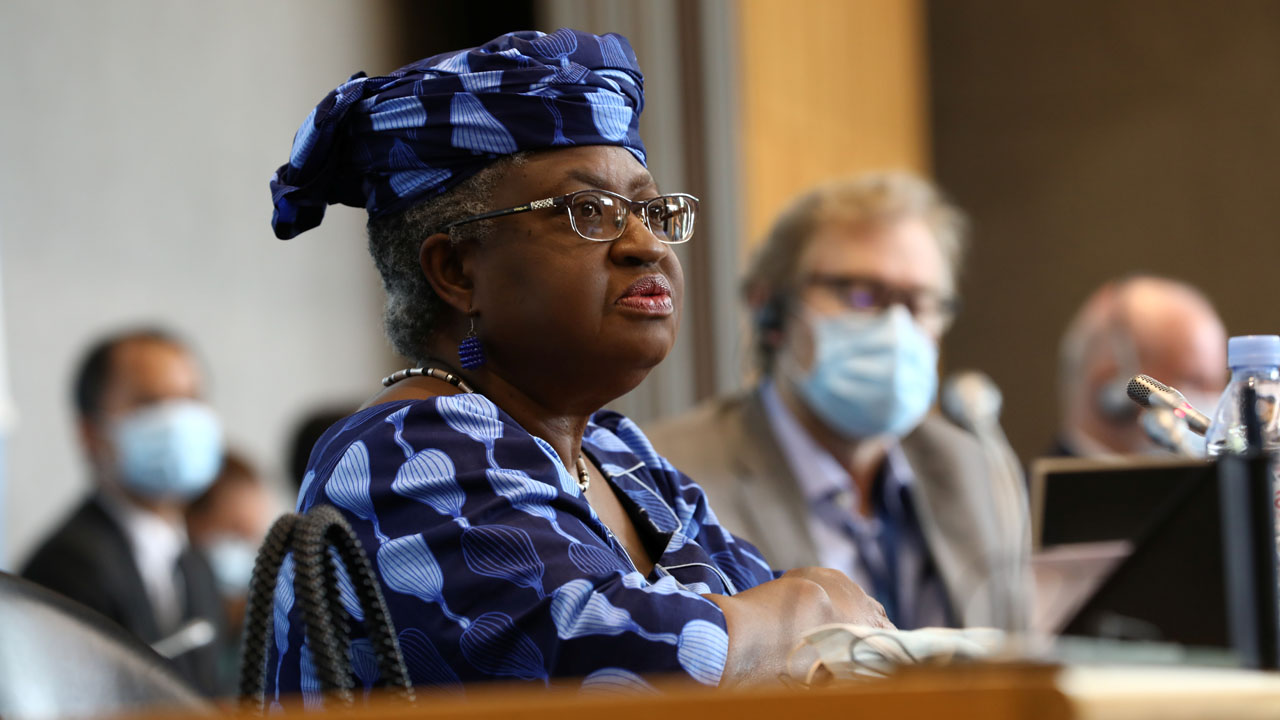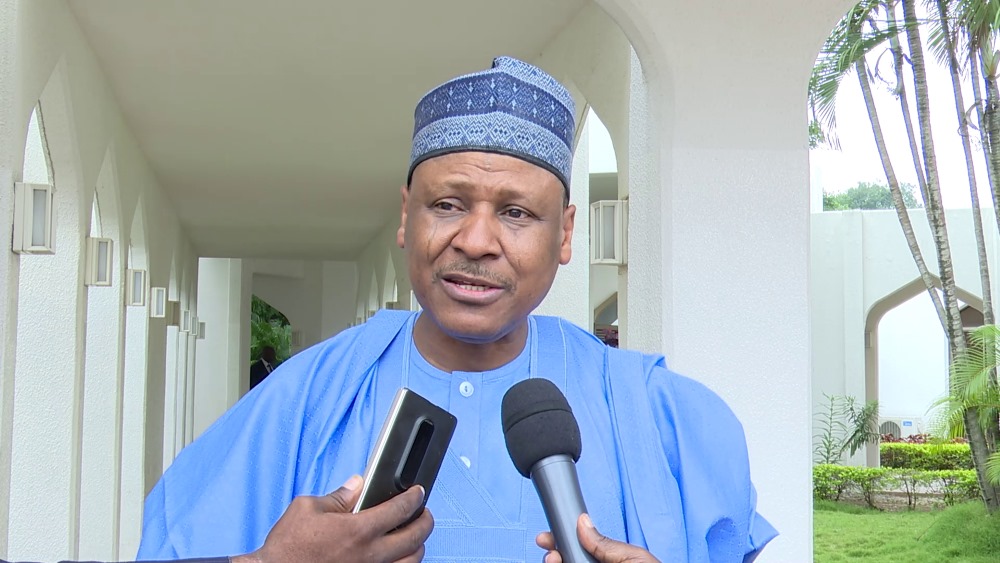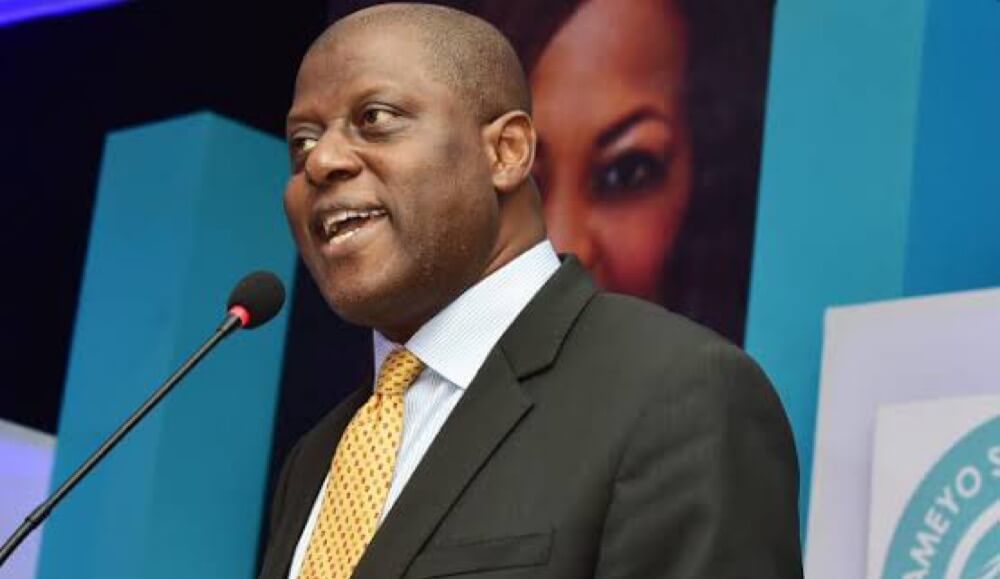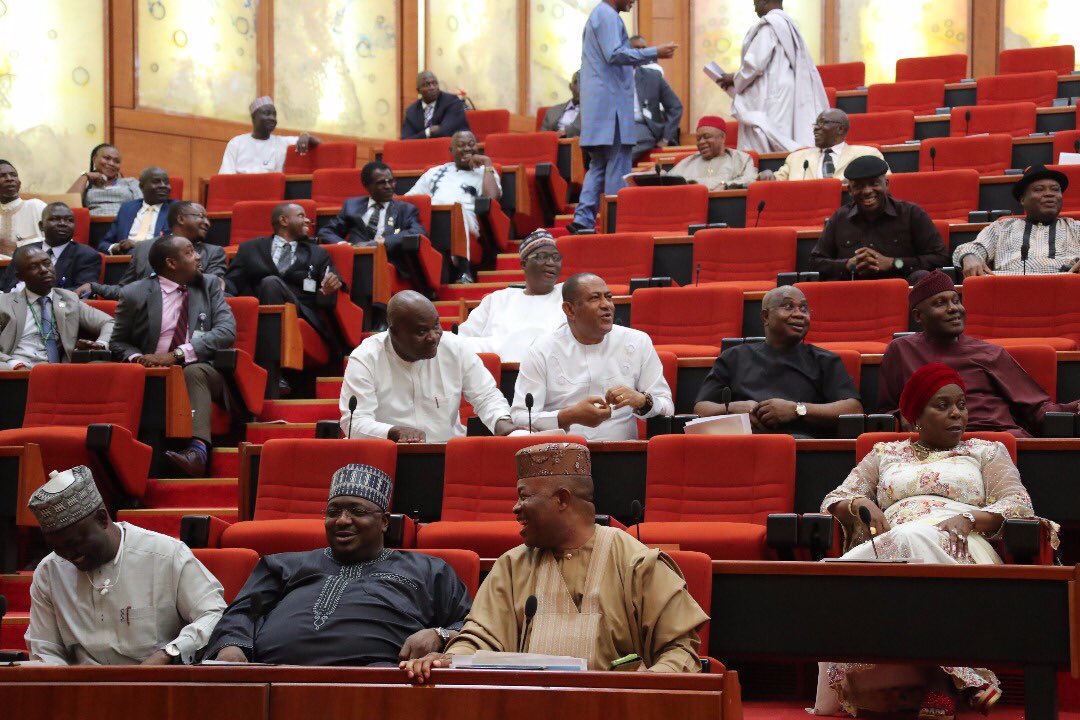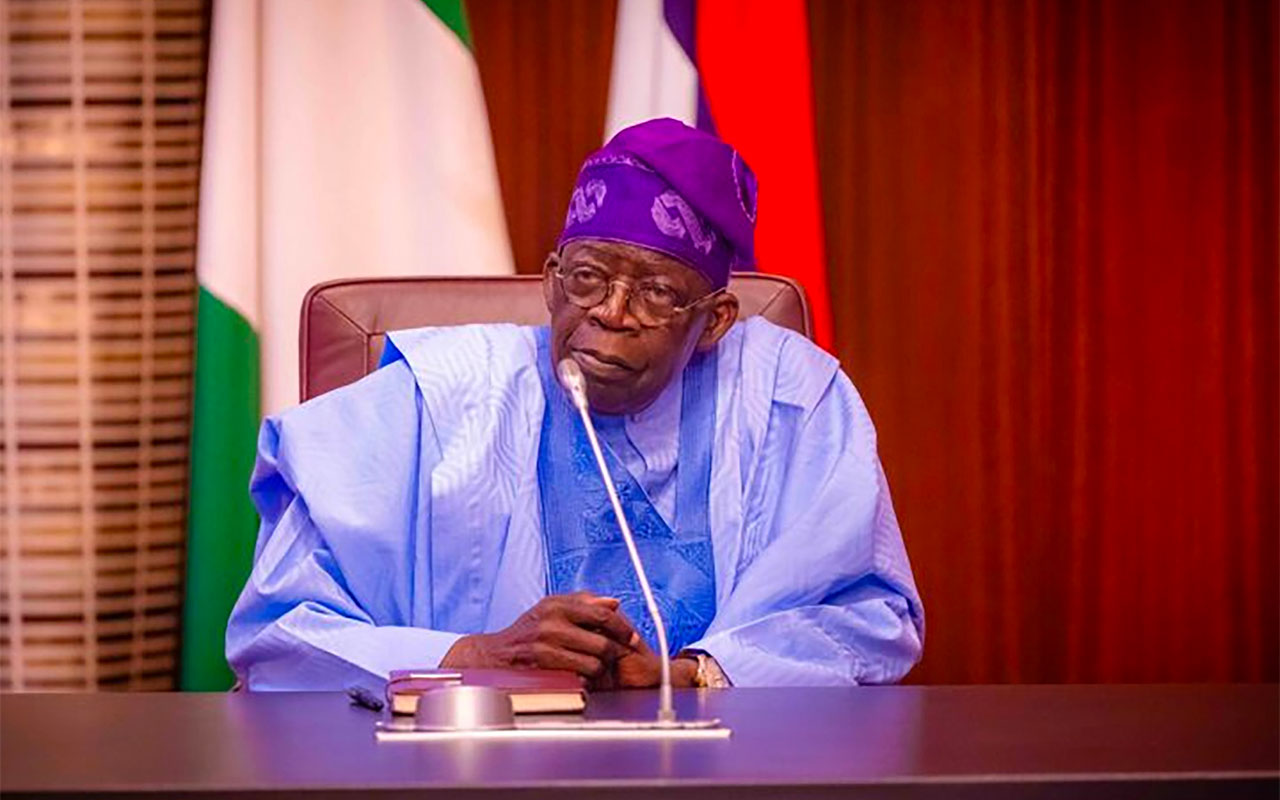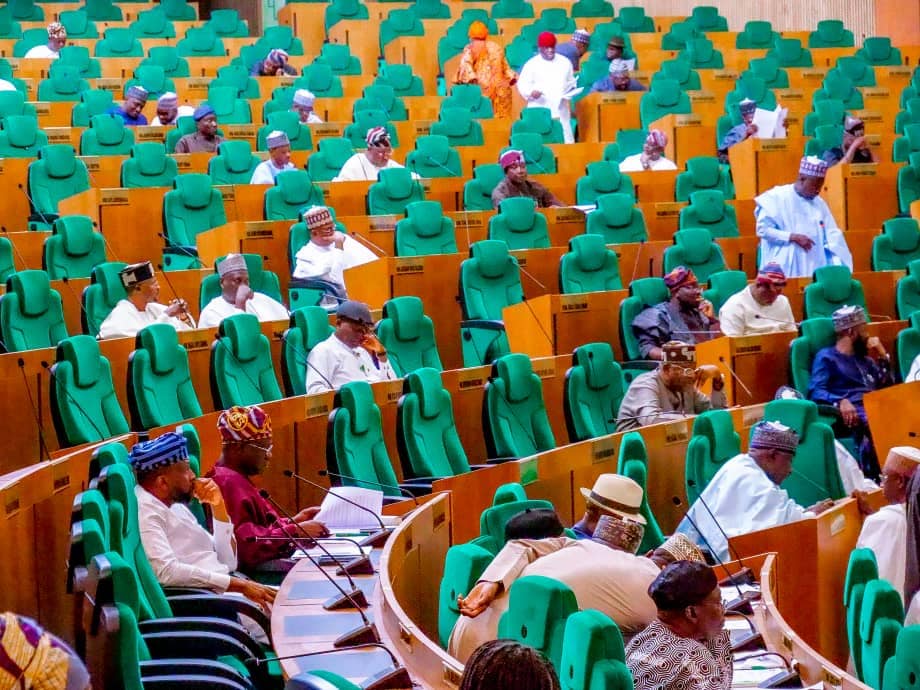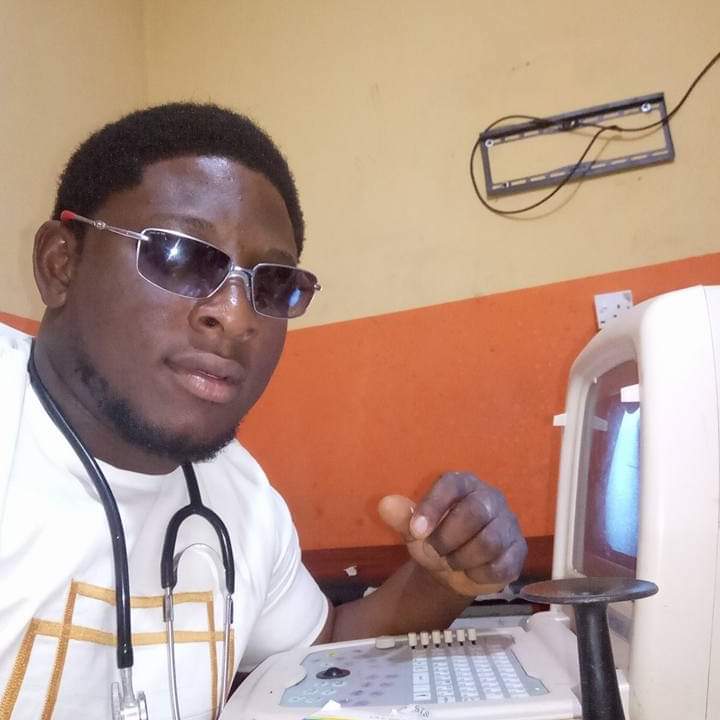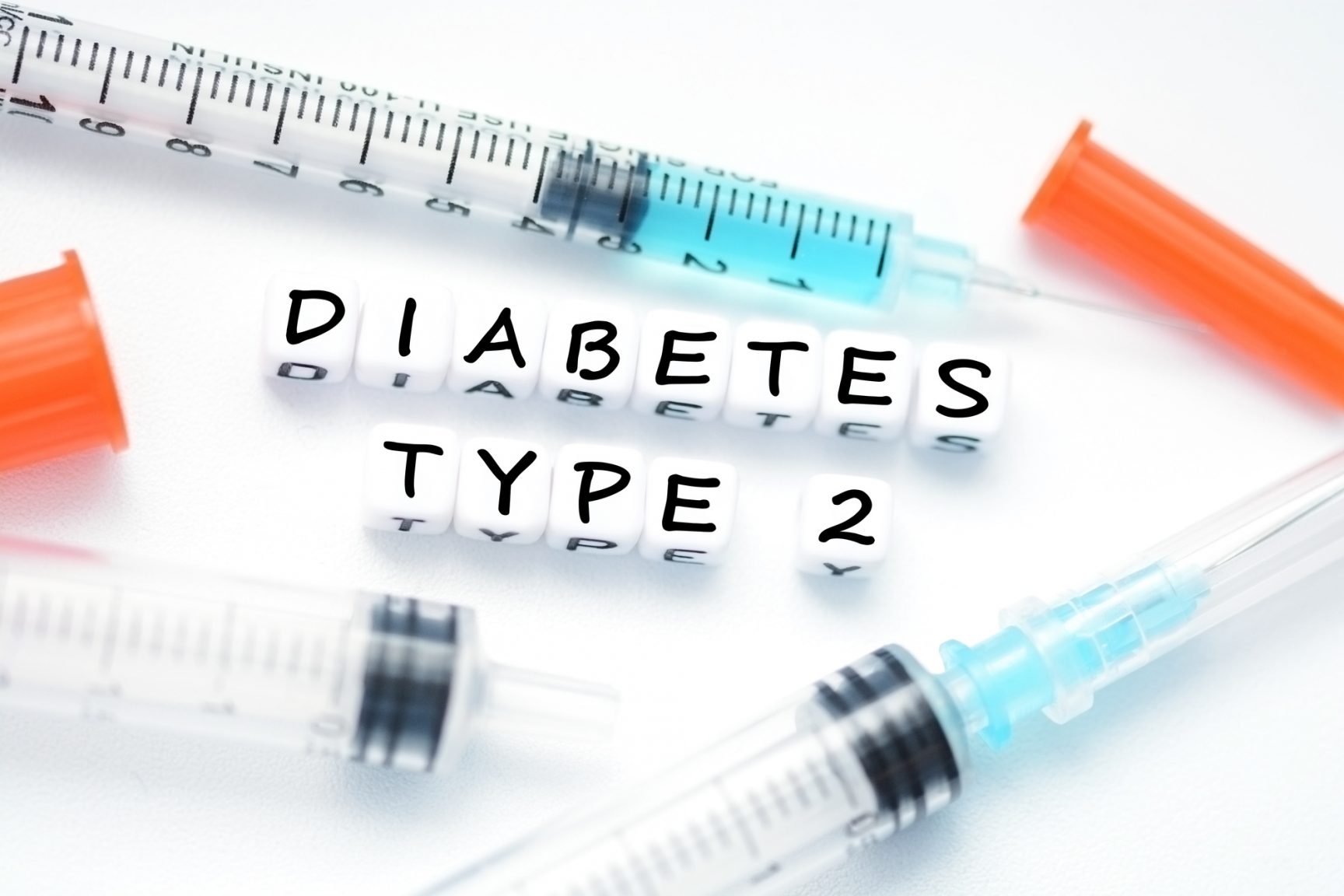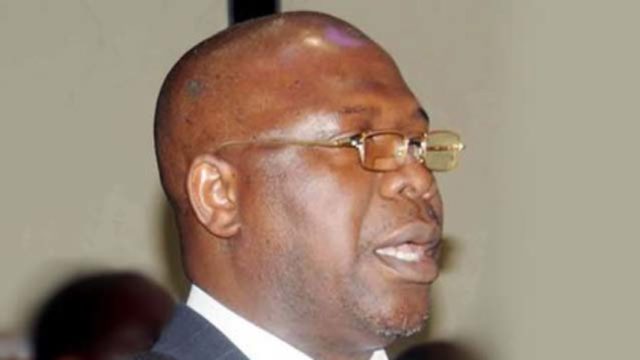With true life stories of people living with HIV/AIDS and stakeholders’ views on the interventions that have taken place in the last 20 years towards ending the disease, CHUKWUMA MUANYA, in this report, highlights the obstacles that may hamper the 2030 target and what could be done to make it realistic.
Mrs. Oluseyi Kadiri was abandoned by her family for four months at Lagos Island Maternity Hospital when she tested positive to Human Immuno-deficiency Virus (HIV) that causes Acquired Immune Deficiency Syndrome (AIDS). Her problem started in 2000 when she first knew her HIV status. And how did she get to know her status?
She visited Lagos from Abuja while pregnant and had her baby in Lagos. Before she came to Lagos, she was using Garki General Hospital Abuja and had done the compulsory AIDS test for every pregnant woman. The result of the test certified her negative. While in Lagos, she gave birth inside her room and later went to a Catholic Hospital close to her house for other care. But two months later, she started bleeding, with thick mucus coming out from her body. She was rushed to St. Nicholas Hospital. After consultation, the doctor referred her to Lagos Island Maternity, where she ran a lot of tests. All family members were supportive until the results of the tests came out.
According to her, the HIV test result (coded as XYZ test) came out positive and she did not know what the XYZ was.
“They called my family aside and told them,” she recalled. “Behold that was the beginning of my life problems. From that day on, every member of my family deserted me. I was left on the bed at Lagos Island Maternity for over four months. Nobody was coming and I was just there. I didn’t know what was happening. I got to understand stigma through the student nurses who came around with a doctor. They would carry my card and show the XYZ test result to them, which made their countenance drop afterwards. It was really not funny for me; when families of people around me came to see them, I was just to myself. It was very painful and traumatic.
“After so much time in the hospital, I thought I was okay but I wasn’t. My CD4 Count (a marker for the immune system) was three. I was tagged paper white; I was just there and my medical bill was accumulating. At a time they said, ‘madam you have to go’. How do I pay? I didn’t have money. Later the Medical Director wrote off my medical bills and I was asked to go. They took me home in an ambulance. Immediately the ambulance dropped me, it wasn’t easy for me to walk, not to talk of getting up to the third floor where I stayed in my father’s house. I was trying to climb the staircase but I couldn’t on my own; I had to crawl. My stepmother met me on the first floor and said, ‘No you should not come up here. Go back.’ I had to come down; I went to the boys’ quarter. My dad came back from the office, he went in and I didn’t know what his wife told him. He came to where I was and asked, ‘What are you doing here? Go back to where you were coming from.’ Where do I go?
“I didn’t have any money on me then. I had been surviving and living in the hospital. Now I am back home and not welcome. He walked me out and locked the gate of the house and said, ‘Seyi, can you see this house? Never come back here.’ Do you know what it means? Nowhere to go! No money on me, no food, no drugs. Remember I didn’t even know what I did wrong; I didn’t know I was HIV positive; it was XYZ. Nobody even called me to say the XYZ in question is HIV.
“Look at the way health workers work? I wasn’t told what was wrong with me; I wasn’t counselled. I couldn’t go anywhere. I was left alone; I became a wanderer.
“I will say trauma was an issue for me, rejection was another thing. The rejection from my family really affected me. I refused to take medication and my condition became worse. I just wanted to die but I didn’t want to die on the street and be wasted. I decided to go back to my mother’s place in Delta State. Those ones had inheritance issues because my mum was the first born and had properties before she died. So, they have been the ones managing the properties since my mother died and my showing up was a challenge. They didn’t even know that those were not my problem.
“I was looking for how to take care of myself and even if I died, let me die in their hands and they would be able to bury me. If my cousins were coming to see me they would say, ‘Auntie how are you? What happened to you? Why all these rashes? This thing be like AIDS?’ I think that was the first time I got to know what was wrong with me had to do with me. Some will now come and tell me, ‘Auntie, do you know that people that have AIDS die? Somebody died there oh. I saw one woman, she was looking like you; they said the husband has AIDS. My heart was just like, ‘so, I have AIDS, I will soon die.’ That was another trauma on its own. Eventually I wasn’t comfortable and had to leave. If I had stayed in that place those people would have poisoned me.”
Kadiri said she continued moving around until she met Media Concern for Women and Children, a Non-Governmental Organisation (NGO).
“That was when the story changed. That was the turn around. Those were the first people that actually counselled me on the difference between HIV and AIDS and made me understand that I am at the AIDS stage but if I could access medication it could be reversed and I could live positively. I had access to treatment in 2003.
“When I started this treatment at the Nigerian Institute for Medical Research (NIMR), Yaba, Lagos, sometimes I would not have money to go to the facility to access my drugs. I didn’t have just N1,000 for me to pay as an administrative charge not to talk of transport money. I thank God I was able to access medication with the help of people.
“I had to come from Badagry to Lagos Mainland to access treatment. The time, the stress and the cost of transportation, were so challenging. As a woman there is no husband, no family and I have children to take care of. You can imagine my situation. Most times I would beg and beg. At a time the doctors at NIMR started contributing money for me. Sometimes they will write a prescription of N16,000 worth of drugs.
“As time passed I got linked to the Abidjan Corridor Organisation and from there I got enrolled into care. I began to attend training and built capacity. Then I actually discovered what I could do to help. There was no day I went out at that Seme-Badagry axis that I would not discover at least two persons living with HIV. I became a cornerstone.
“The worst part of it is that till today I have not been able to reconcile with the father to my children and my biological father. So, single handedly I have been able to raise a graduate; I have been able to raise a HND holder and my two boys are really helping me and breaking new grounds as far as HIV and tuberculosis are concerned.
“Looking back I can say I am an orphan. No father, no mother, no family to go to, no siblings; I am just me. So, you can imagine that trauma alone on me.”
On the way forward, she said: “So, be a voice, empathise and advocate for care and support for people living with HIV. Most women out there need empowerment. We need drugs, good and fine; but psychosocial support is another thing. A lot of women are there down with mental health issues. Let us also consider gender-based violence issues. Most women with HIV are facing gender-based violence.”
Narrating his story, Mr. Patrick Akpan, said: “I was working with one of these multinational companies in Lagos.
I kept going down every time. People kept asking me, ‘you have been working, you have money, why are you like this? I tried to eat more to add weight but unfortunately nothing happened. Later, I began to see rashes all over my body. I was living with my brother who advised me to visit a hospital. I decided to visit the Ikeja General Hospital in 2004 and asked for an HIV test. They said I should come back in one week. When I came I saw XYZ. I asked what XYZ was. But I saw something that said I have to do a confirmatory test. It was then that it dawned on me that this could be HIV positive. For one year, I did not go for that confirmatory test. I was still working; I was still running around and I didn’t know there was treatment or whatsoever. One day I was moving in my room and slumped. Thank God my fiancée then, who is now my wife, was there with me. I was rushed to the same General Hospital and was admitted,” Akpan said.
He added: “Some people that were in the hospital ward with me all died. I became colour blind. I was referred to NIMR for my drugs. The doctor there called me a walking corpse. Every time I came, he would tell me to go and come back and I told him that if I die my blood would be on his hands. So, he told them to give me the drugs, that they should not follow procedures because I was a walking corpse.
“Before I started treatment my body was pulling off. My flesh was dropping on its own. I would sit down like this, one part of my body would open and flesh would come down. I was in a very bad situation; I already had an advanced stage of AIDS. That is why I keep telling people, if you see me doing this work vigorously it is because I know I am living a borrowed life. I have a bonus life for 20 years now. So, I have decided to give back to society because I know if not for God I wouldn’t be alive today. I had a CD4 Count of 10. I had some money, so I was planning my burial as well.
“I also experienced stigma. The first one was at NIMR when Prof. Oni Idigbe was the Director General. I was the coordinator of persons with HIV receiving treatment at the centre. I was called up to speak at the podium during his send forth. When I got back to my seat, there was nobody on my table. Those people that were on my table had moved to where my colleagues with HIV were sitting. They didn’t know they were running from me to go and sit with others with HIV. That was my first experience of stigma.
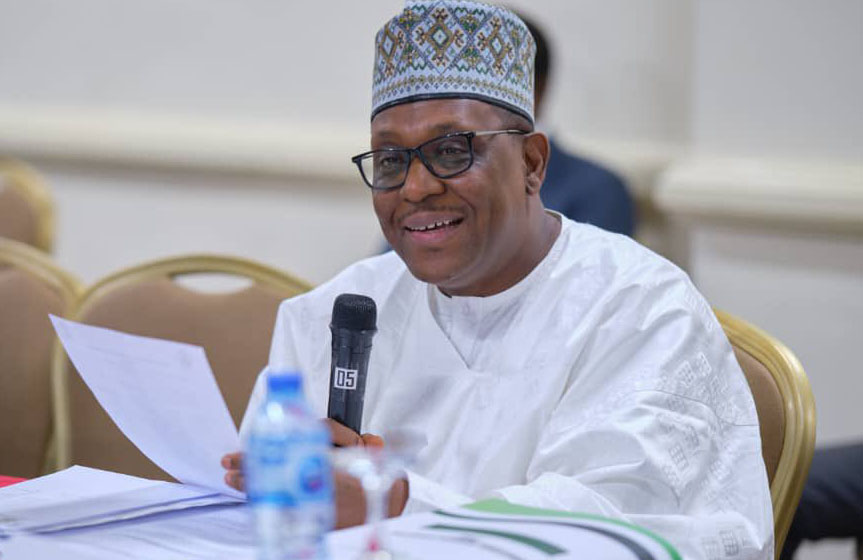
“The next one was my immediate elder brother who was a councillor in my local government. We had a cousin who died of AIDS. When I came back from Lagos, I asked my brother how we could help our cousin’s wife and children. My elder brother asked me what I wanted to do with such people. I told him they are human beings just like us. He said he blamed the medical doctor who allowed them to come back without injecting them to die. That was my own blood brother and I was taking AntiRetroviral drugs (ARVs) for treatment of HIV and I was HIV positive. I told myself that if this man knew I was HIV positive he would likely take my life.”
Akpan said the major challenge to accessing the ‘free’ national programme was the enormous administrative charges by some treatment centres, especially NIMR, Yaba. He said some treatment centres charge between N5,000 and N20,000 as administrative fees for people living with HIV to access the ‘free’ HIV treatment programme by the Federal Government.
However, investigation confirmed that the charges were also for some laboratory tests.
On the way forward, he noted: “People need to know that you can bounce back from AIDS to HIV just like me. I have been in undetectable status for many years now. I had a situation where a relative refused to hear anything about the sister who was positive and nearly electrocuted me with naked wire because I refused to leave her house when I went to plead on behalf of her HIV positive sister.
“I want people to understand that HIV is not a death sentence; that you can live positively with the virus. The painful part was that the lady could not be revived despite our efforts. I believe it was the rejection and stigma that killed her, not even HIV. We also had a case of a man who took his wife back after she bounced back with treatment.”
Fredrick Adegboye tested positive to HIV on his birthday in April 2003 and his admission into the Nigerian Institute for Journalism (NIJ) was withdrawn because he voluntarily disclosed his status.
“I was repulsive to myself. I had grown so lean that people were running away from me. I lost most of my friends. Stigma kills more than anything but 21 years on I am still alive,” Adegboye said.
He further explained: “I voluntarily opened up about my status; I was not forced to disclose my status. So, when they were trying to drive me away from NIJ, I told them I will not allow it. I wanted to go to the Office of the First Defender but I thought otherwise. I was emotionally disturbed at that moment. Then I went back to Ibadan, got in contact with my support group led by Oba Oladapo who was the coordinator. I narrated my ordeal to him and he now reached out to Journalists Against AIDS (JAAIDS) in Lagos and that was how a media war started. The Director General of the National Agency for the Control of AIDS (NACA) invited me over to Abuja to get my own side of the story. I went there with my letter of withdrawal and letter of admission. I told him that I had to disclose my status because there were conditions in the letter of admission that could affect me because I was travelling everyday from Ibadan to Lagos to attend lectures and there were days I had to go to University Teaching Hospital (UCH) to get my drugs. I was ready to go to court but the NACA DG told me that there was no law on that. He told me that he was going to convince NIJ to take me back and NACA was going to give me a scholarship. JAAIDS really tried; they mobilised the media to fight for me.
“My family stood by me through the trying period even till today. JAAIDS sensitised the media on the use of appropriate language because it is the stigma that kills not even the virus. Look at me now; I have been taking my drugs for 21 years. I am still alive. The doctor who tested me recently said I am virus suppressed, which means that HIV is undetectable and therefore I cannot transmit the virus.
“Majority of my peers self-stigmatise and once you do that there is nothing anybody can do for you. You have to be bold enough and courageous enough to fight stigma. I told JAAIDS that if it meant me standing on the top of the mountain to disclose my HIV status that I will gladly do that and not lose my admission. I knew what I went through then, travelling from Ibadan to Lagos everyday for almost two weeks. Eventually my admission was given back to me and I won an award from JAAIDS called Heroes of Stigma Fighters.”
Kadiri, Akpan and Adegboye are among estimated 1.8 million Nigerians that are living with HIV and receiving free life-saving drugs provided by the Federal Government with support from international donors, especially the United States Government through the United States President Emergency Fund for AIDS Relief (PEPFAR), United States Agency for International Development (USAID) and the Joint United Nations Programme on AIDS (UNAIDS).
The trio, who have lived for over 20 years after testing positive to the virus, narrated their ordeals to journalists, development experts, government officials and international donors during a HIV Media Training, which took place from Monday 8 – Friday 12 July 2024 in Lagos.
The training was supported by PEPFAR Nigeria through the Henry Jackson Foundation Medical Research International (HJFMRI) Ltd Gte.
Their stories and the presentations by experts addressed some questions regarding the quest to end AIDS by 2030. These included the barriers to accessing ‘free’ treatment by persons living with HIV; how stigma and discrimination as well as criminalisation of activities of key population including sex workers, people who inject drugs (PWID) and Men who have sex with Men (MSM) is fuelling new HIV infections and restricting access to treatment and care; why Nigeria still has highest mother-to-child transmission of the virus worldwide; why only 40 per cent of donor funds get to treatment of persons with virus while 60 per cent is spent on administration and logistic fees; and over reliance on donor funding with no clear national budget for HIV to make ‘free’ treatment unsustainable.
Speaking during the training, representative of UNAIDS, Dr. Murphy Akpu, said: “There is a lot of assumption that HIV/AIDS is not a problem anymore. It is a good thing to some degree because it shows that people no longer see it as a threat. A lot of positives have come out of the treatment that has been happening for the past 20 years plus. Thank God for the effort of our government and also our donor partners and all of that. But when people no longer see HIV as a threat we might stand at a risk of reversing what we have, the benefit that we have gained, all the people we have put on treatment.
“There are still real problems to contend with. Our people are largely ignorant of what HIV is. People still carry a lot of stigma about HIV, living with HIV. We ridicule people who live with HIV; we mock them and to a large degree they choose not to be visible in public and therefore those narratives continue to pose some challenges for even those on treatment and those who need to get tested and get on treatment.
“For the longest time, journalists have not been part of the response because we started pursuing the effort of putting people on treatment but for you to achieve lasting sustainable public health success, it is not just a medical agenda, it is also a social agenda and you have to change people’s agenda and mindset and reconstruct it. That is why journalists come in. So, this is first in a series of what I hope will be an expanded conversation in the media community to bring them back into the HIV response because the media will help us address misconceptions, shape public narratives that will allow us to actually get to the end of an epidemic.
“At the end of that process, because it is not something that we have a cure for, we still have a lot of people living with HIV. We are estimating that about two million Nigerians are living with the virus now. New infections would be added to that number and as people live longer that number would continue to grow. So it is not something we should stigmatise. In the medical world they are beginning to think about HIV to be more like chronic manageable diseases like hypertension and diabetes. So, journalists can help remove the stigma of HIV so that people living with HIV and all can see it just like other chronic illnesses like hypertension and diabetes.”
Country Director and CEO of Living Health International, Dr. Gbenga Adebayo, said: “To end AIDS, we need to get the media back, especially editors and journalists, put them up to speed on what is happening as far as HIV and AIDS is concerned in Nigeria and build capacity. Following this building of capacity we can now begin to tell the proper stories, ask the right questions and start to chip away stigma and discrimination so that people with HIV/AIDS will know that this is not a death sentence. A friend of mine said that anybody that dies of AIDS in this age and time should be seen as suicide and he has now updated it and said it is now community assisted suicide.
“We can help ourselves. We can help people know what HIV/AIDS is and what it is not. In this age and time, anybody that is living with HIV that takes his or her medication within six months would be virally suppressed and the person can live a good, decent, viable, vibrant life. So, it is important that we go back to this kind of response and start to communicate effectively. There are so many things happening about HIV/AIDS that people are not aware of, even senior journalists.
“What we hope to happen, and it is happening already, is to build a community of practice that will have media practitioners that are fully abreast of what is happening in HIV space.”
To the Executive Director of JAAIDS Nigeria, Olayide Akanni, the general public now believes that HIV/AIDS is no longer an issue in Nigeria.
His words: “For us to create awareness to bring back the public consciousness of the reality of HIV and the challenges that we need to still deal with, we felt that it was important to begin to engage with communication experts and we know that journalists and media are a critical part of that space. We decided to have this training for journalists to update them on new interventions, new developments in HIV response in Nigeria and also to groom a community of practice where journalists can come together, network, share story ideas and help to keep HIV in the news. We know that once an issue is in the news it is in the front burner of public discourse and the public consciousness is renewed to the reality of the issues. Again we are also seeing trends in the HIV response that were not there 10 years ago when many of the journalists were trained. So, it is important that we bridge the knowledge gap so that the journalists are able to provide adequate and accurate information to their audiences.”
PEPFAR Nigeria Country Coordinator, Funmi Adesina, who was represented by Dr. Nnenna Onyemaobi, said stigma remains one of the most significant barriers to ending the HIV epidemic, saying it prevents individuals from seeking testing, treatment and support, and also spreads fear and misinformation.
Adesina said: “As journalists, you have the responsibility to report on HIV with accuracy, sensitivity and compassion. Your stories can educate the public, dispel myths and promote a culture of acceptance and understanding. I urge you to join us in advocating for the rights and dignity of people living with HIV. Highlight their stories, celebrate their resilience and challenge the stereotypes that perpetuate discrimination. By doing so, you contribute to creating an environment where everyone feels safe to access the services they need without fear of judgment or rejection. Furthermore, it is crucial that we use the media as the right channel to disseminate accurate and evidence-based information about HIV. Misinformation can have devastating consequences, leading to fear, stigma and harmful practices. We must work together to ensure that the public receives the right messages about prevention, treatment and care. By doing so, we can empower individuals to make informed decisions about their health and well-being.
“Together, we stand united in our mission to end HIV in Nigeria and ensure a future free from the burden of this epidemic. Since its inception, PEPFAR has been at the forefront of the global response to HIV/AIDS, providing life-saving treatment, prevention and care services to millions of individuals. In Nigeria, our efforts have been pivotal in reducing new HIV infections, increasing access to antiretroviral therapy and improving the quality of life for those living with HIV. Through strong partnerships with the Government of Nigeria, civil society organisations like JAAIDS and communities, we have made significant strides towards controlling the epidemic.
“However, our journey is far from over. Today, I want to emphasise the critical role that you, as journalists, play in this fight. The media is a powerful tool for change, and your voices can shape public perception, influence policy, and drive social transformation. It is essential that we leverage this power to combat stigma and discrimination against people living with HIV.”
She charged journalists to remember that ending HIV in Nigeria is not just a medical challenge but also a social and moral one.
“By working together, we can create a future where every individual, regardless of their HIV status, can live a life free from stigma and discrimination. Let us continue to fight for this future with passion, dedication and unwavering resolve,” Adesina said.


